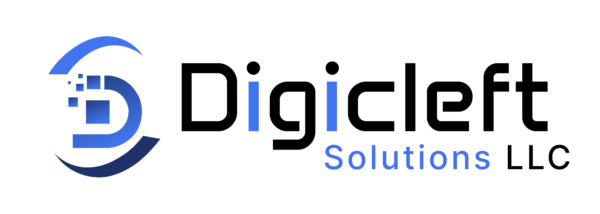![Latest Software Development Technology Trends to look out for [2025]](https://digicleftsolutionsllc.com/wp-content/uploads/2025/07/Latest-Software-Development-Technology-Trends-to-look-out-for-2025-1024x664.png)
Overview:
As we move into 2025, the software development industry is seeing a change. This change is reshaping how we create, launch, and grow applications. The digital world is changing quickly. Keeping up with the latest software development tools and trends is not just an advantage — it’s necessary.
In 2025, we will see big changes. AI-driven development, serverless computing, quantum programming, and low-code platforms will lead the way. This guide shows the key software development trends for 2025 and beyond. It is for developers, CTOs, and technology fans.
1. AI and Machine Learning-Driven Development
Artificial Intelligence (AI) and Machine Learning (ML) remain at the forefront in 2025. We now see AI coding assistants like GitHub Copilot becoming stronger tools. They do more than just autocomplete.
Key Applications:
- Code generation & debugging: AI tools can write boilerplate code, identify bugs, and suggest improvements in real-time.
- Predictive analysis: Developers can use ML models to predict app behavior or system failures before they happen.
- Automated testing: AI streamlines the testing process by generating test cases and identifying issues during development.
AI is also heavily integrated into DevOps, making deployment and monitoring more intelligent and efficient.
2. Serverless Architecture is Maturing
Serverless computing is not new. However, by 2025, it will be the main choice for scalable and affordable software development 2025. Cloud providers like AWS Lambda, Azure Functions, and Google Cloud Functions are now offering:
- Enhanced cold start performance
- Greater language support
- Seamless integration with containerized environments
Why it matters:
- Faster development cycles
- Reduced infrastructure management
- Pay-as-you-go cost efficiency
Startups and enterprises alike are adopting serverless for event-driven applications, microservices, and backend-as-a-service (BaaS) projects.
3. Shift Left in Security (DevSecOps)
Security is no longer a post-deployment activity. The DevSecOps approach emphasizes integrating security earlier in the development lifecycle, also known as a “Shift Left” strategy.
2025 advancements:
- Security-as-Code: Automated tools scan for vulnerabilities in real-time during development.
- SBOM (Software Bill of Materials): Transparency about components and dependencies is required for compliance.
- AI in security: Machine learning models detect zero-day vulnerabilities and malicious behavior patterns early.
As cyber threats become more sophisticated, secure coding and automated security validation are now non-negotiable.
4. Web3 and Decentralized Apps (DApps)
The buzz around Web3 hasn’t faded; it has evolved. In 2025, Web3 is moving beyond hype with real-world applications in finance, identity, and data ownership.
Technologies driving Web3:
- Blockchain protocols like Ethereum 2.0 and Solana
- Smart Contracts for automation
- IPFS (InterPlanetary File System) for decentralized data storage
Developers are now working on creating secure and scalable decentralized applications (DApps). These apps connect to blockchain backends using common front-end frameworks like React and Node.js.
5. Cognitive and Natural Language Interfaces
ChatGPT and similar models sparked interest in natural language applications. In 2025, Cognitive UI is taking center stage. Think:
- Voice-controlled apps
- Text-to-code systems
- Conversational agents embedded in enterprise tools
Natural language processing (NLP) APIs allow developers to integrate semantic understanding into apps. This leads to a more intuitive, human-like user experience.
6. Cross-Platform Development with Flutter, Kotlin Multiplatform & React Native
The dream of writing once and running everywhere is becoming more practical in 2025.
- Flutter 4.0: Now supports more robust performance on desktop, mobile, and web platforms.
- Kotlin Multiplatform: Let’s developers share code across Android, iOS, and the backend development trends 2025.
- React Native: Remains a favorite for rapid mobile development with extensive third-party plugin support.
Cross-platform frameworks are ideal for teams aiming to reduce cost and development time while maximizing reach.

7. Composable Architecture and Micro-Frontends
As software systems become more complex, a composable architecture allows for assembling applications like LEGO blocks. This concept is extending to the frontend, where micro-frontends are rising.
Benefits in 2025:
- Faster development cycles
- Team autonomy (different teams manage different components)
- Improved scalability
Frameworks like Module Federation (Webpack 5) and Single SPA are key enablers of this modular architecture.
8. Quantum Computing & Quantum Software Development
While quantum computing is still in its infancy, 2025 marks a significant step forward in quantum programming.
Key developments:
- Qiskit (IBM) and Cirq (Google) are offering more mature SDKs
- Quantum cloud services are accessible to developers for experimentation
- Hybrid algorithms combine classical and quantum computing
Quantum applications in drug discovery, cryptography, and optimization are now possible. This opens new opportunities for research-focused software teams.
9. Rise of Low-Code and No-Code Development
By 2025, low-code/no-code platforms will not just be for prototyping — they will be enterprise-grade.
Use Cases:
- Internal tools
- Dashboards
- MVPs for startups
Platforms like OutSystems, Mendix, and Microsoft Power Apps help business users and non-tech professionals join in software delivery. This reduces the need for developers.
10. Continuous Integration & Continuous Deployment (CI/CD) 2.0
The traditional CI/CD pipeline is evolving to meet modern demands.
What’s new in CI/CD 2.0:
- GitOps for infrastructure automation
- AI-enhanced pipelines that self-heal failed deployments
- Policy-as-code to enforce governance
Tools like Argo CD, Flux, and Spinnaker are helping teams ship faster with better observability and compliance.
11. Data-Driven Development & Observability
With microservices and distributed systems, observability has become critical. In 2025, developers will rely on telemetry data to make real-time decisions.
Trends:
- OpenTelemetry adoption for unified logging, tracing, and metrics
- AI for anomaly detection
- Real user monitoring (RUM) tools integrated into the development lifecycle
Better observability leads to faster debugging, improved UX, and optimal performance.
Conclusion:
The software development landscape in 2025 is defined by automation, decentralization, intelligence, and composability. The key takeaway? Adaptability is essential.
To remain competitive:
- Embrace AI-enhanced tools in coding, testing, and deployment.
- Build using modular, scalable architectures.
- Prioritize security and observability from the start.
- Stay curious about emerging paradigms like quantum and Web3.
If you are a startup making a new product, or a big company updating old systems, these trends can help you.
They lead you to innovation and strength.
FAQs
Which software development trend will dominate in 2025?
The biggest trend is using AI throughout the development process. This includes code generation, testing, deployment, and monitoring. AI is drastically increasing developer productivity and accuracy.
Is serverless computing better than traditional cloud infrastructure?
In many cases, yes. Serverless is ideal for event-driven applications, scalable microservices, and cost-effective deployments. However, for resource-intensive apps, traditional cloud setups may still be required.
Should developers learn blockchain in 2025?
If you’re interested in Web3, decentralized applications, or fintech, then yes. Learning blockchain concepts, smart contracts, and protocols like Ethereum will give you an edge.
How is quantum computing affecting software development?
While still niche, quantum computing is making waves in fields like cryptography, logistics, and healthcare. Developers are experimenting with frameworks like Qiskit and Cirq to prepare for future breakthroughs.
Are low-code platforms replacing traditional developers?
No. Low-code and no-code platforms complement developer workflows by enabling faster prototyping and empowering non-technical users. Complex applications still require traditional coding expertise.
What programming languages are trending in 2025?
Languages like Python, TypeScript, Rust, Go, and Kotlin are becoming popular. They are known for their speed, safety, and strong community support.
Is DevSecOps just a buzzword?
Not at all. DevSecOps ensures that security is built into every phase of software development, which is crucial given rising cybersecurity threats and compliance requirements.
How can developers stay up to date with technology trends?
Subscribe to technology development 2025 blogs. Attend developer conferences. Take online courses. Contribute to open-source projects. Engage with communities on GitHub, Reddit, or Stack Overflow.
What’s the future of mobile development?
Cross-platform frameworks like Flutter, React Native, and Kotlin Multiplatform are dominating. These tools reduce development costs and time while ensuring native-like performance.
Why is observability important in 2025?
With complex systems and distributed architectures, observability helps teams monitor, troubleshoot, and optimize applications efficiently. It’s a core pillar of modern DevOps practices.


